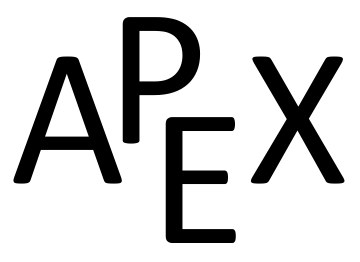The quantities that changing are
\(x\) and
\(\theta\) as drawn on
Figure 4.2.9. (The hypotenuse of the triangle is also changing, but this isn’t important to the problem). We seek information about how fast the camera is to
turn; therefore, we need an equation that will relate an angle
\(\theta\) to the position of the camera and the speed and position of the car.
Figure 4.2.9 suggests we use a trigonometric equation. Letting
\(x\) represent the distance the car is from the point on the road directly in front of the camera, we have
\begin{equation}
\tan(\theta) = \frac{x}{10}\text{.}\tag{4.2.1}
\end{equation}
Now take the derivative of both sides of
Equation (4.2.1) using implicit differentiation:
\begin{align*}
\tan(\theta) \amp = \frac{x}{10}\\
\lzoo{t}{\tan(\theta)} \amp = \lzoo{t}{\frac{x}{10}}\\
\sec^2(\theta)\lz{\theta}{t} \amp = \frac{1}{10}\lz{x}{t}
\end{align*}
Now we solve for \(\lz{\theta}{t}\text{:}\)
\begin{equation}
\lz{\theta}{t} = \frac{\cos^2(\theta)}{10}\lz{x}{t}\tag{4.2.2}
\end{equation}
As the car is moving at 100 mph, we have that \(\lz{x}{t}\) is -100 mph (as in the last example, since \(x\) is getting smaller as the car travels, \(\lz{x}{t}\) is negative). We need to convert the measurements so they use the same units (we chose ft); rewrite -100 mph in terms of ft⁄s:
\begin{align*}
\lz{x}{t} \amp = -100\frac{\text{mi} }{\text{ hr } }\\
\amp = -100\frac{\text{mi} }{\text{ hr } }\cdot5280\frac{\text{ ft } }{\text{mi} }\cdot\frac{1}{3600}\frac{\text{ hr } }{\text{s} }\\
\amp =-146.\overline{6}\text{ ft/s }\text{.}
\end{align*}
We want to know the fastest the camera has to turn. Common sense tells us this is when the car is directly in front of the camera (i.e., when
\(\theta = 0\)). Our mathematics bears this out. In
Equation (4.2.2) we see this is when
\(\cos^2(\theta)\) is largest; this is when
\(\cos(\theta) = 1\text{,}\) or when
\(\theta = 0\text{.}\) We also know that we should get an answer that is in
rad⁄s. Since
\(\cos(\theta)\) is a “dimensionless” measure, it won’t contribute to the units. However, radians are also dimensionless. This means we can write (or erase) the word “radian” without any unit consequences. (The same is not true of degrees — always convert degress to radians).
With \(\lz{x}{t}\) approximately -146.7 ft⁄s, we have
\begin{align*}
\lz{\theta}{t} \amp \approx -\frac{1}{10\text{ ft } }146.67\text{ ft/s }\\
\amp = -14.667\text{ radians/s }
\end{align*}
We find that
\(\lz{\theta}{t}\) is negative; this matches our diagram in
Figure 4.2.9 for
\(\theta\) is getting smaller as the car approaches the camera.
What is the practical meaning of
-14.667 rad⁄s? Recall that
\(1\) circular revolution goes through
\(2\pi\) radians, thus
14.667 rad⁄s means
\(14.667/(2\pi)\approx 2.33\) revolutions per second. The negative sign indicates the camera is rotating in a clockwise fashion.





